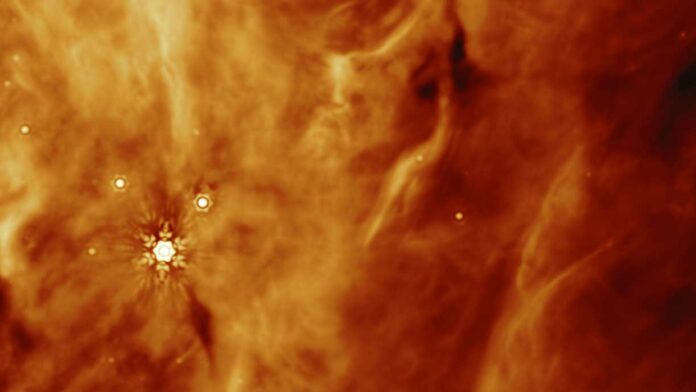NASA’s James Webb Space Telescope discovered the chemical components typically present in margaritas, vinegar, and ant stings surrounding two young protostars known as IRAS 2A and IRAS 23385.
The molecules covered in the study range from relatively basic ones like methane to sophisticated ones like acetic acid, known to cook as a vinegar ingredient. These compounds are essential components of worlds that could support life in the future.
Using Webb’s MIRI, the group identified several icy substances, including Ethanol (alcohol) and perhaps acetic acid (a vinegar constituent).
Team leader Will Rocha of Leiden University in the Netherlands said, “This finding contributes to one of the long-standing questions in astrochemistry. What is the origin of complex organic molecules, or COMs, in space? Are they made in the gas phase or ices? The detection of COMs in ices suggests that solid-phase chemical reactions on cold dust grains’ surfaces can build complex molecules.”
Since several COMs, including the ones found in this study’s solid phase, were previously seen in the warm gas phase, it is now thought that ice sublimation is where COMs begin. Sublimation is the direct, non-liquid transition from a solid to a gas. Astronomers are therefore encouraged to have a better understanding of the origins of other, even larger molecules in space after discovering COMs in ice.
The extent to which these COMs are carried to planets at much later stages of protostellar formation is another topic that scientists are eager to investigate. It is believed that cold ice COMs are simpler to move than heated, gaseous molecules from molecular clouds to planet-forming disks. Therefore, these ice COMs can be integrated into comets and asteroids, which may then collide with planets in the process of formation, providing the necessary elements for life to potentially flourish.
Simpler compounds including sulfur dioxide, formaldehyde, methane, and formic acid—which gives ant stings their searing sensation—were also found by the scientific team. According to research, sulfur-containing substances like sulfur dioxide were crucial in propelling metabolic processes on the early Earth.
The fact that IRAS 2A, one of the sources under investigation, is classified as a low-mass protostar, is especially intriguing. Thus, IRAS 2A might resemble the early phases of our own solar system. Therefore, it’s possible that the compounds found in the vicinity of this protostar were there during the early phases of the solar system’s creation and were then transported to the early Earth.
Ewine van Dishoeck of Leiden University, one of the coordinators of the science program said, “All of these molecules can become part of comets and asteroids and eventually new planetary systems when the icy material is transported inward to the planet-forming disk as the protostellar system evolves. We look forward to following this astrochemical trail step-by-step with more Webb data in the coming years.”
Journal Reference:
- W. R. M Rocha, E. F. van Dishoeck et al. JWST Observations of Young protoStars (JOYS+): Detecting icy complex organic molecules and ions. Astronomy & Astrophysics. DOI: 10.1051/0004-6361/202348427
